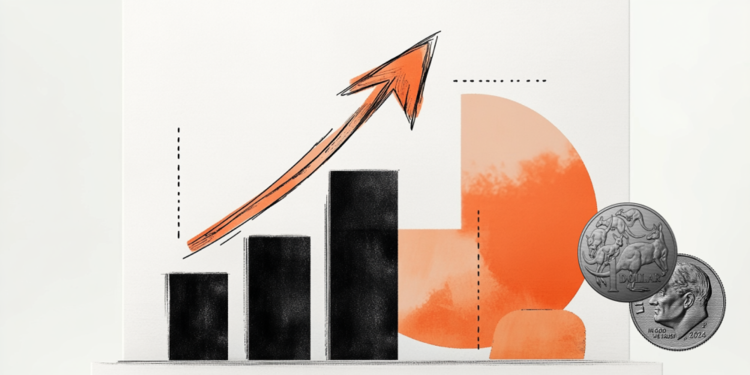The Australian Dollar (AUD) advances against the US Dollar (USD) on Thursday, extending its gains for the second successive session. The AUD/USD pair gains ground following the release of Australia’s Consumer Inflation Expectations for October, which edged up to 4.8% from 4.7% prior. marking the highest reading since June.
The mounting concerns that Australia’s inflation may exceed forecasts in the third quarter support the cautious stance surrounding the Reserve Bank of Australia (RBA). The Australian central bank is expected to maintain its interest rates after deciding to keep its Official Cash Rate (OCR) unchanged at 3.6% in September. The RBA warned that inflation has proven more persistent than expected, especially in market services, while the labor market remains tight.
China’s Commerce Ministry said on Thursday that the country will tighten rules on rare earth exports, taking effect from December 1. Foreign businesses and individuals must obtain a dual-use items export license for rare earth exports.
Australian Dollar rises as US Dollar declines amid government shutdown
- The US Dollar Index (DXY), which measures the value of the US Dollar against six major currencies, is halting its three-day winning streak and trading around 98.70 at the time of writing. The speech by Federal Reserve (Fed) Chair Jerome Powell will be in the spotlight later on Thursday.
- The US government shutdown entered its ninth day with no sign of progress, as the Senate on Wednesday once again rejected competing funding proposals from Republicans and Democrats to end the stalemate.
- Minutes from the Fed’s September meeting released on Wednesday showed that a majority of policymakers supported the September rate cut and signaled further reduction later this year. However, some members favored a more cautious approach, citing concerns about inflation.
- Federal Reserve (Fed) Board of Governors member Stephen Miran expressed his belief on Tuesday that inflation itself is simply a cause of “population increases”. Monetary policy needs to ease to get ahead of the shift down in the neutral rate, Miran added.
- Minneapolis Fed President Neel Kashkari struck a more reserved tone than some of his Fed counterparts on Tuesday, cautioning that it’s still too soon to be able to tell if tariff-led inflation will be “sticky” or not. However, Kashkari noted that he’s particularly bullish on the labor market and is expecting a return to form for American job creation, which has sputtered recently.
- Kansas City Fed President Jeffrey Schmid delivered hawkish remarks on Monday, saying that the Fed must maintain its inflation credibility and stressed that inflation is too high. Schmid added that monetary policy is appropriately calibrated.
- The CME FedWatch Tool suggests that markets are now pricing in a 92.5% chance of a Fed rate cut in October and an 78% possibility of another reduction in December.
- Private house approvals in Australia declined by 2.6% month-over-month (MoM) to 9,027 units in August, as expected, and reversing a 1.3% rise in the previous month. Meanwhile, the seasonally adjusted Building Permits fell by 6% MoM to 14,744 units, following a 10% decrease previously, marking the second consecutive monthly decline.
- University of Melbourne reported on Tuesday that Australia’s Westpac Consumer Confidence declined 3.5% month-over-month (MoM) to 92.1 in October, a sharper decline than the previous 3.1% fall, marking the fastest drop since April. ANZ Job Advertisements slipped 3.3% MoM in September, a much steeper drop than the previous decline of 0.3%.
- TD-MI Inflation Gauge showed a 0.4% increase month-over-month in September, rebounding from a 0.3% fall in the prior month. Meanwhile, the annual inflation gauge rose 3%, following a 2.8% increase in the previous period.
Australian Dollar tests 0.6600 barrier after breaking above nine-day EMA
The AUD/USD pair is trading around 0.6600 on Thursday. Technical analysis on the daily timeframe suggests that the pair is remaining within the ascending channel, indicating a persistent bullish bias. Additionally, the 14-day Relative Strength Index (RSI) is positioned above the 50 level, strengthening the bullish bias.
On the upside, the AUD/USD pair may explore the region around the 12-month high of 0.6707, recorded on September 17. A break above this level would support the pair to reach the upper boundary of the ascending channel around 0.6800.
The immediate support lies at the nine-day Exponential Moving Average (EMA) of 0.6594, followed by the 50-day EMA of 0.6564 and the ascending channel’s lower boundary around 0.6560. A break below this crucial support zone would likely cause the emergence of a bearish bias and prompt the AUD/USD pair to navigate the area around the four-month low of 0.6414, recorded on August 21.
AUD/USD: Daily Chart
Economic Indicator
Consumer Inflation Expectations
The Consumer Inflation Expectation released by the Melbourne Institute presents the consumer expectations of future inflation during the next 12 months. The higher expectations, the stronger the effect they will have on a probability of a rate hike by the RBA. Therefore, a high reading should be taken as positive, or bullish, for the AUD, while a low expectations are seen as negative or bearish.
Read more.
Last release:
Thu Oct 09, 2025 00:00
Frequency:
Monthly
Actual:
4.8%
Consensus:
–
Previous:
4.7%
Source:
University of Melbourne
Read the full article here


